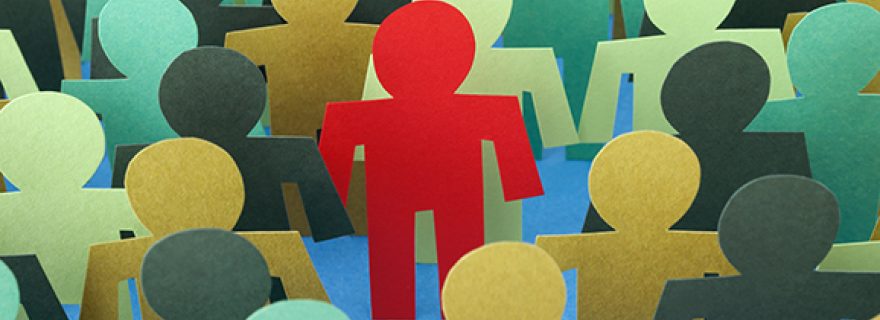What do you think about differences? Struggling with social inclusion
Social inclusion of people with disabilities requires destigmatization of intellectual disabilities and mental health problems
In recent years more and more articles and opinion pieces have been appearing in mainstream media that focus on the social integration of people with intellectual disabilities or mental health problems. One example that struck a chord with the first author of this blog (Anika Bexkens) was a reader’s question about whether it was ok for someone with an intellectual disability to be disruptive to other hotel guests by emitting a monotonous sound, or whether the questioner should have asserted his or her own right to peace and quiet.
Integration vs. Inclusion
Through our work with people with intellectual disabilities and people with severe psychiatric problems, we are sensitive to the struggles that can occur in a society striving for inclusivity. In recent years, there have been many policy changes that promote the integration of people with physical and/or intellectual disabilities in for instance, regular schools, the workforce, and community-based (supported) living arrangements. This fosters a situation where people with intellectual disabilities or psychiatric problems are sometimes caught between a rock and a hard place. They are forced by policy to participate in a society that may not be open to receive them. The challenge with these top-down policy changes, although they are commendable, is that it is not enough just to focus on integration: what we need is a focus on inclusion. Integration requires people with a disability to adjust to society. This is different from inclusion, which would mean that people with disabilities are full members of society in all areas. In other words, for inclusion to occur it is not enough for people with disabilities to participate and integrate into society; society also needs to make space and include people with disabilities, and to value differences. We argue that this is at odds with important values in our society focused on individual needs and freedom, as expressed in the reader’s question described at the start of this blog.
Individualized society
Most people we speak with do not oppose the idea of more integration of people with intellectual disability or psychiatric problems in all the different areas of society. At least at the abstract and theoretical level... When it comes to inclusion, however, there are many problems. We Dutch highly value our individualized society. Although most people will happily sacrifice part of their income (through taxes) to support our excellent social security system, tolerance to differences seems lower when they negatively impact an individual’s personal life. Indeed, research shows, for example, that people with intellectual disabilities who move from supported living to their own community housing frequently experience loneliness and social isolation. Neighbors do not know how to deal with the characteristics of people with disabilities or mental health problems and may feel helpless, or may not want to get involved.
Confused people vs. Psychiatric patients
How would you react to someone who tries to make contact in an unusual way, for instance by ‘making your skirt dance’, as described by Romana Vrede in a compelling and personal piece about her son who has autism. Or how would you respond to someone in the supermarket who starts telling you about inner voices you don’t hear? There are still attitudes within most societies that view symptoms of psychopathology as threatening and unpredictable. This is promoted in part by stereotypic portrayals of psychopathology on tv or cinema, but also by selective negative media coverage. A good example of the latter is all the recent attention for ‘confused people’. The term confused people (verwarde personen) is used by the police to describe people who are encountered in a confused state and ask for help. The term however, has been taken over by policymakers, has appeared more and more in mainstream media, and seems to have become more or less synonymous with psychiatric problems. Confused behavior can be caused, however, by a lot of other circumstances, such as medication use, dementia, or somatic problems.
Quite common
Negative attitudes towards people with mental health problems frequently engender stigma and discrimination. An important cause of this is a lack of knowledge about psychopathology. For example: did you know that 43.4% of Dutch people will experience a psychiatric disorder at some point in their lifetime? And did you know that about 10% of all young people fall within the criteria for the definition of mild intellectual disability used in the Netherlands? So, the truth is that both intellectual disability and psychiatric problems are quite common. But… obviously, such problems are less visible than, for example, a broken leg. Also, most people with intellectual disabilities and/or severe psychiatric problems can actively participate in society. Sometimes all it takes is some extra support from a parent, a friend, a volunteer, or an employer.
Initiatives
Fortunately, in the last few years many initiatives have arisen to destigmatize mental health problems. Prime examples are television programs where young people talk about their mental health problems, or special events like the social run. We argue that more is needed to further promote this bottom-up movement towards greater social integration of individuals with intellectual disabilities or mental health problems. What will you do differently if you meet someone tomorrow who tries to make contact in an unusual way or starts to tell you about inner voices you don’t hear?






